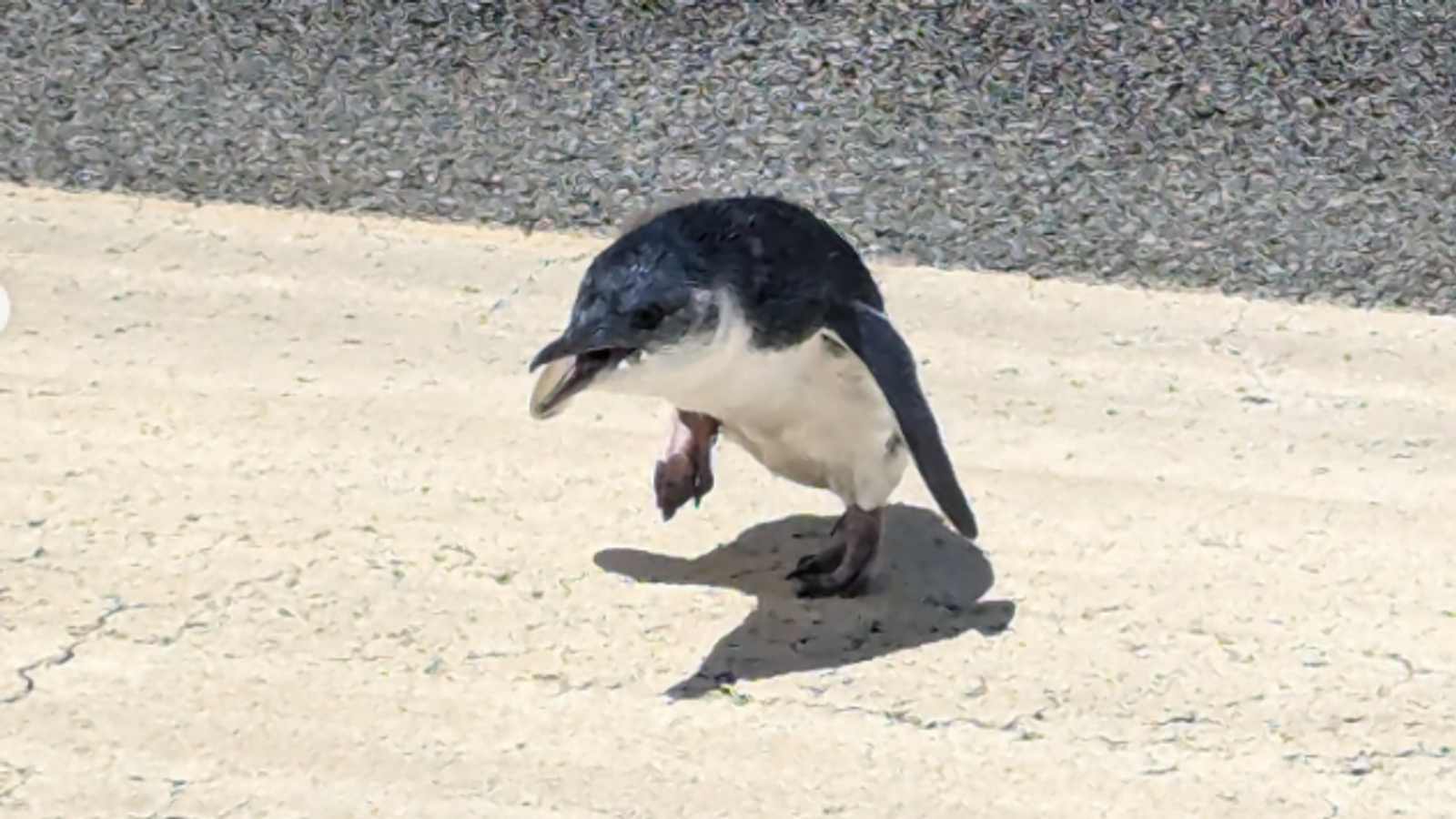A tiny penguin has been rescued after it was spotted on a runway in New Zealand’s capital last week.
A pilot was moments away from taking off when an odd visitor – a korora or little blue penguin – appeared on the tarmac at Wellington Airport on 12 January.
Airport staff rushed to collect the small bird as passengers waited on board.
The bird, native to New Zealand and the smallest species of penguin in the world, was transported to the Nest Te Kohanga at Wellington Zoo, which specialises in rehabilitating native wildlife.
The zoo said the penguin was only six weeks old when it was brought through its gates.
A typical little blue penguin stands at just 25cm, weighs a little over 1kg and lives to about 8-10 years old.
The centre described it as hungry and a little underweight, but otherwise healthy.
Prince Edward meets world’s oldest living land animal – who was alive during Queen Victoria’s reign
South Lanarkshire: ‘Large bulldog-type dog’ shot dead after two men attacked
XL bully rule details unveiled by Scottish government
The penguins live in natural nests at Lyall Bay, minutes from the airport, and the zoo said the fledgling “probably got lost on the way home”.
The zoo fed the penguin “lots of yummy fish” as part of a weight-gain diet and vets attended to the bird with X-rays and blood work to ensure it was healthy.
Read more from Sky News:
Outsider wins bird of the century
Puppies bought during pandemic tend to be naughty
It said the little penguin was “well on the road to recovery” adding that as soon as its feathers were waterproofed it would be set free into the wild.
Meanwhile, Wellington Airport said it had installed “penguin proofing” to its fences to ensure no future accidental trespasses.
Be the first to get Breaking News
Install the Sky News app for free
Auckland Zoo, which also cares for little blue penguins, said its populations were declining in areas where predators roam, whereas numbers are stable or rising when controls are in place.
The birds only come ashore at night, and they live underground in burrows, natural holes, or under human structures and buildings.







